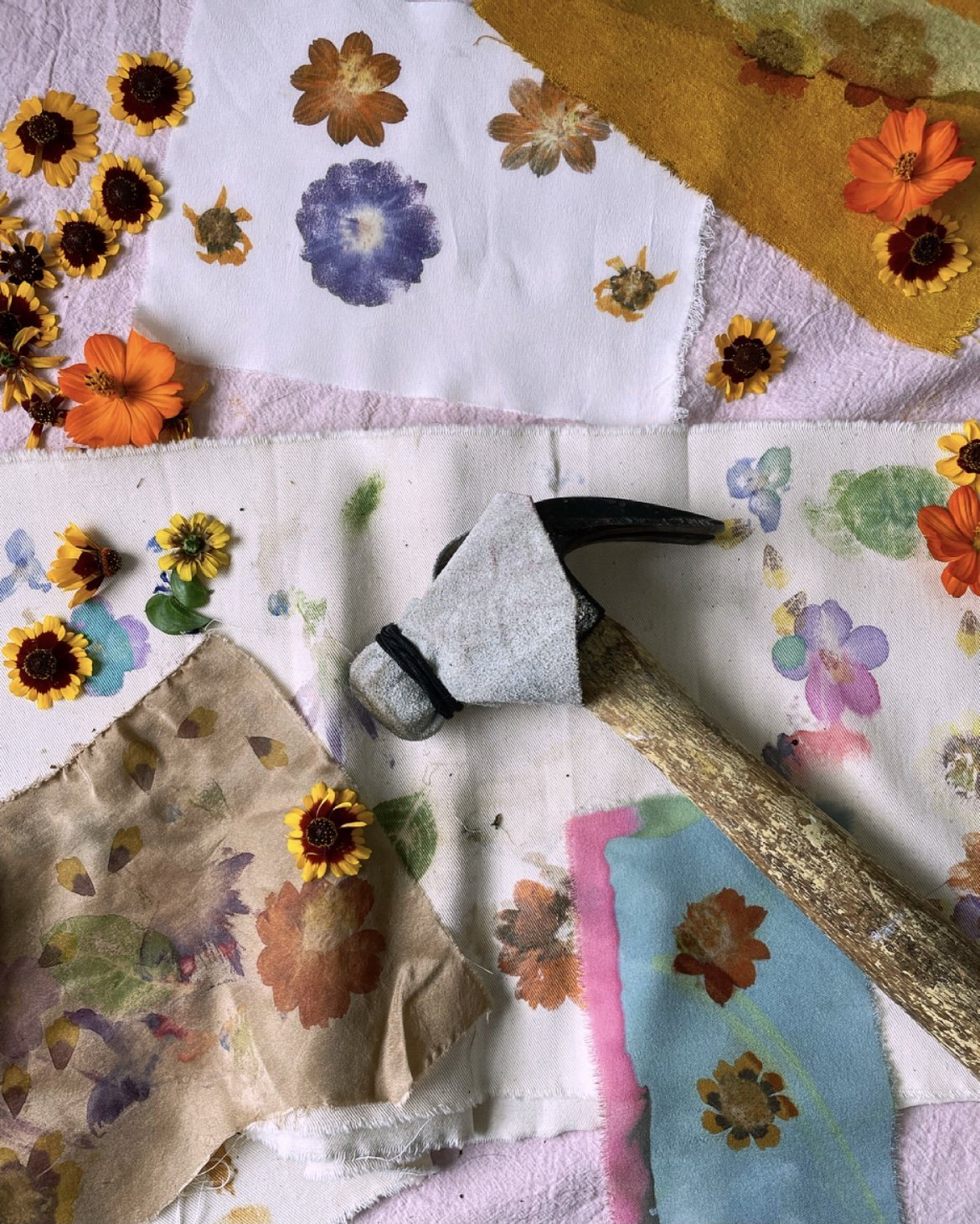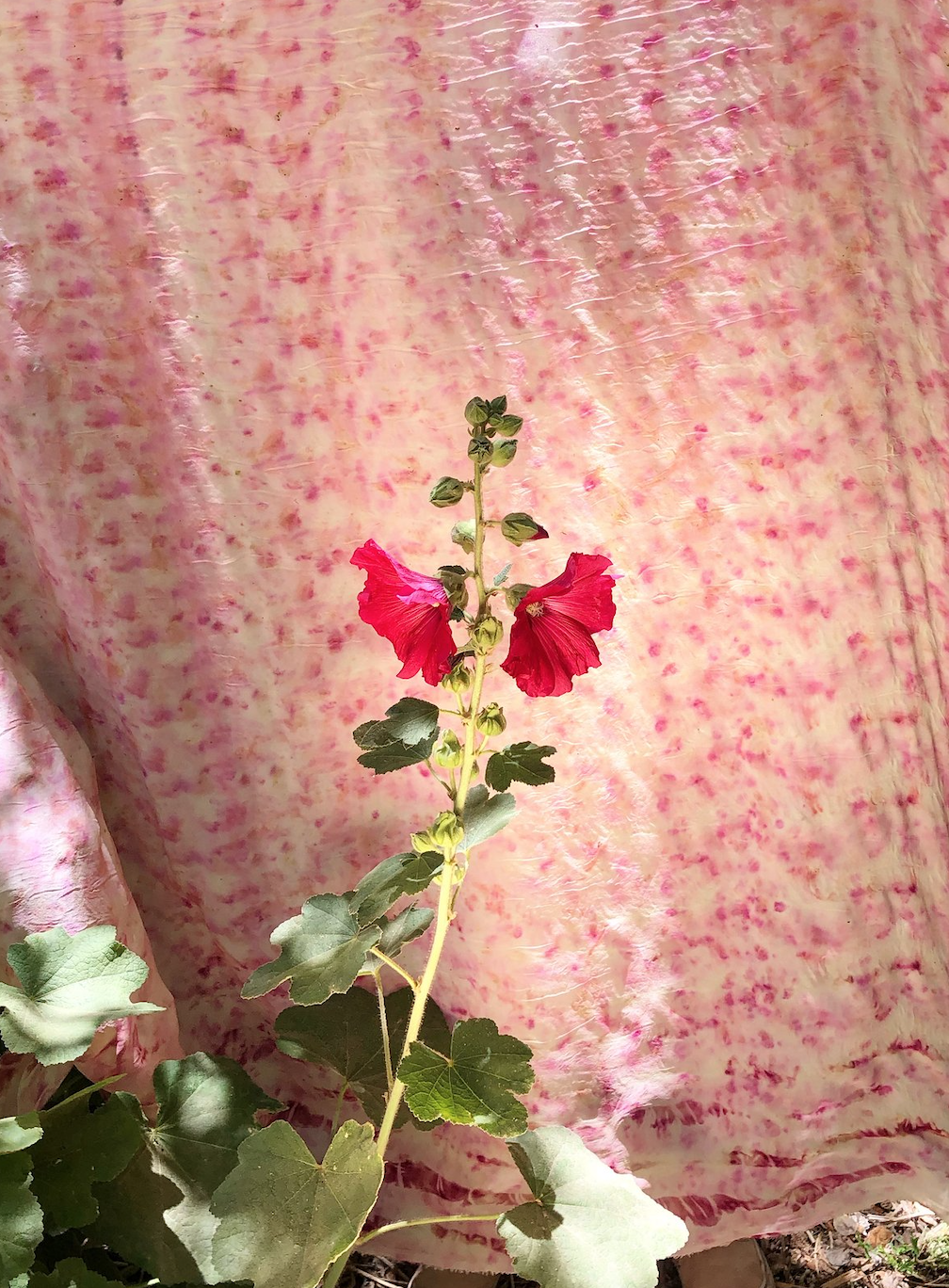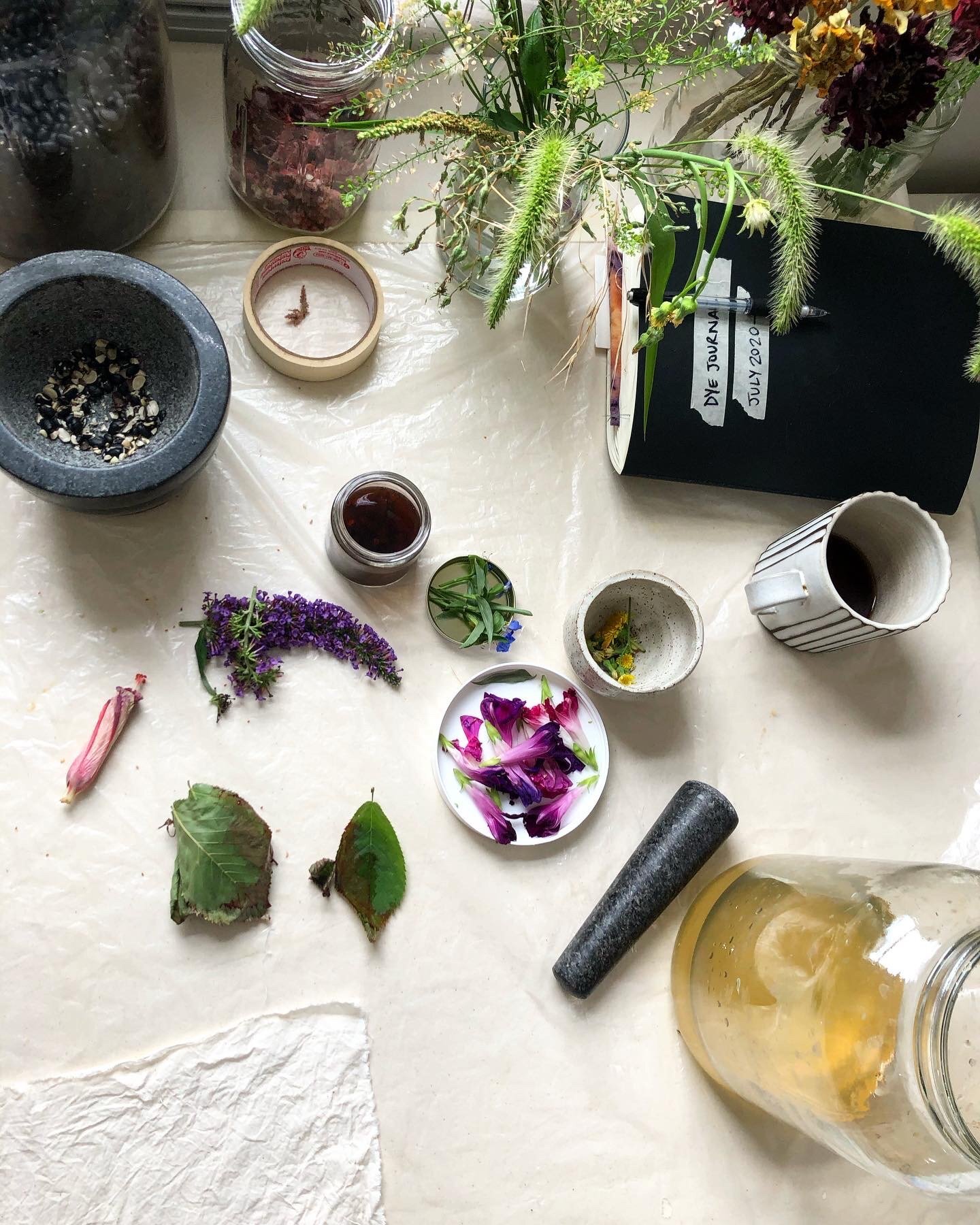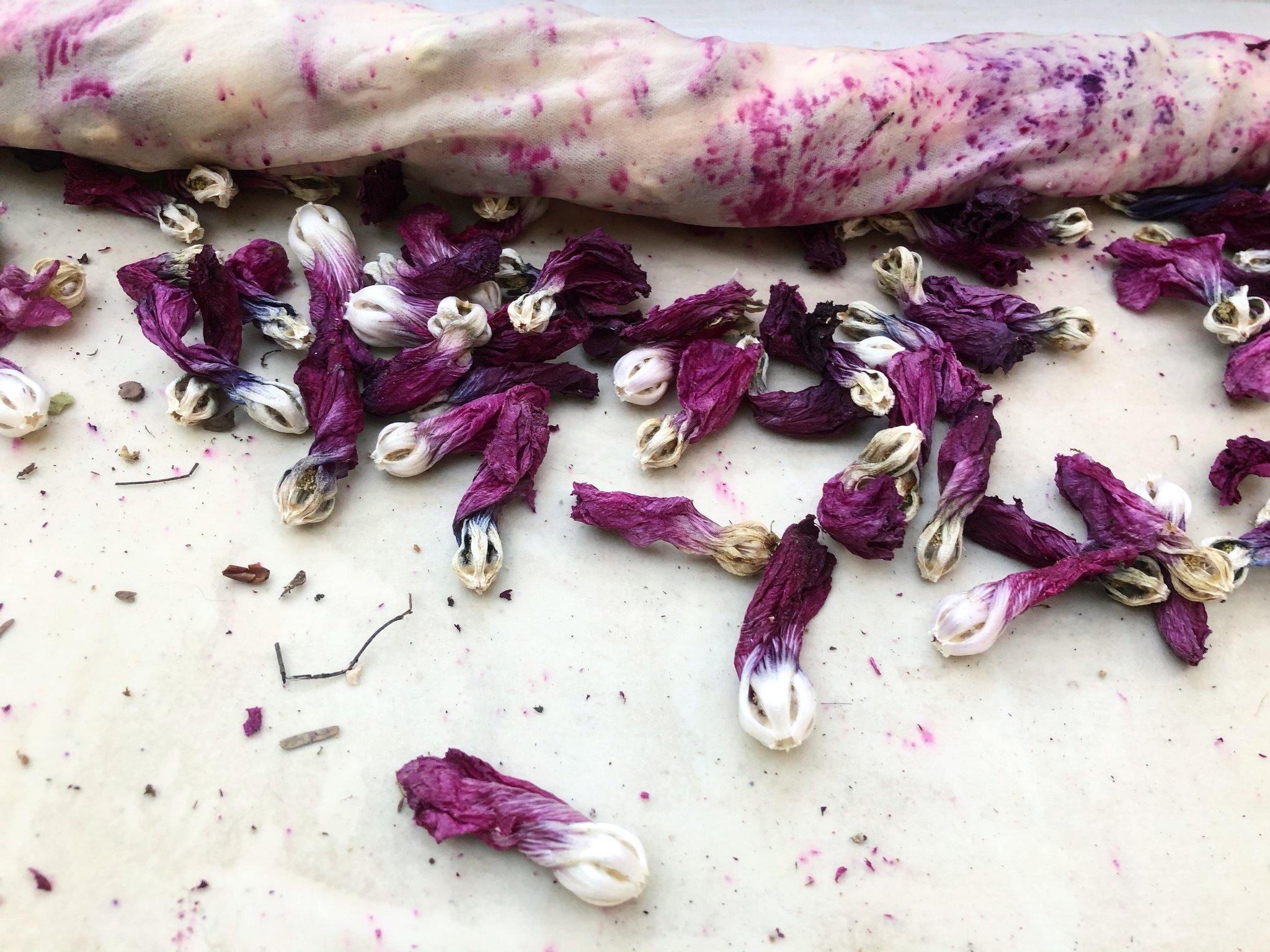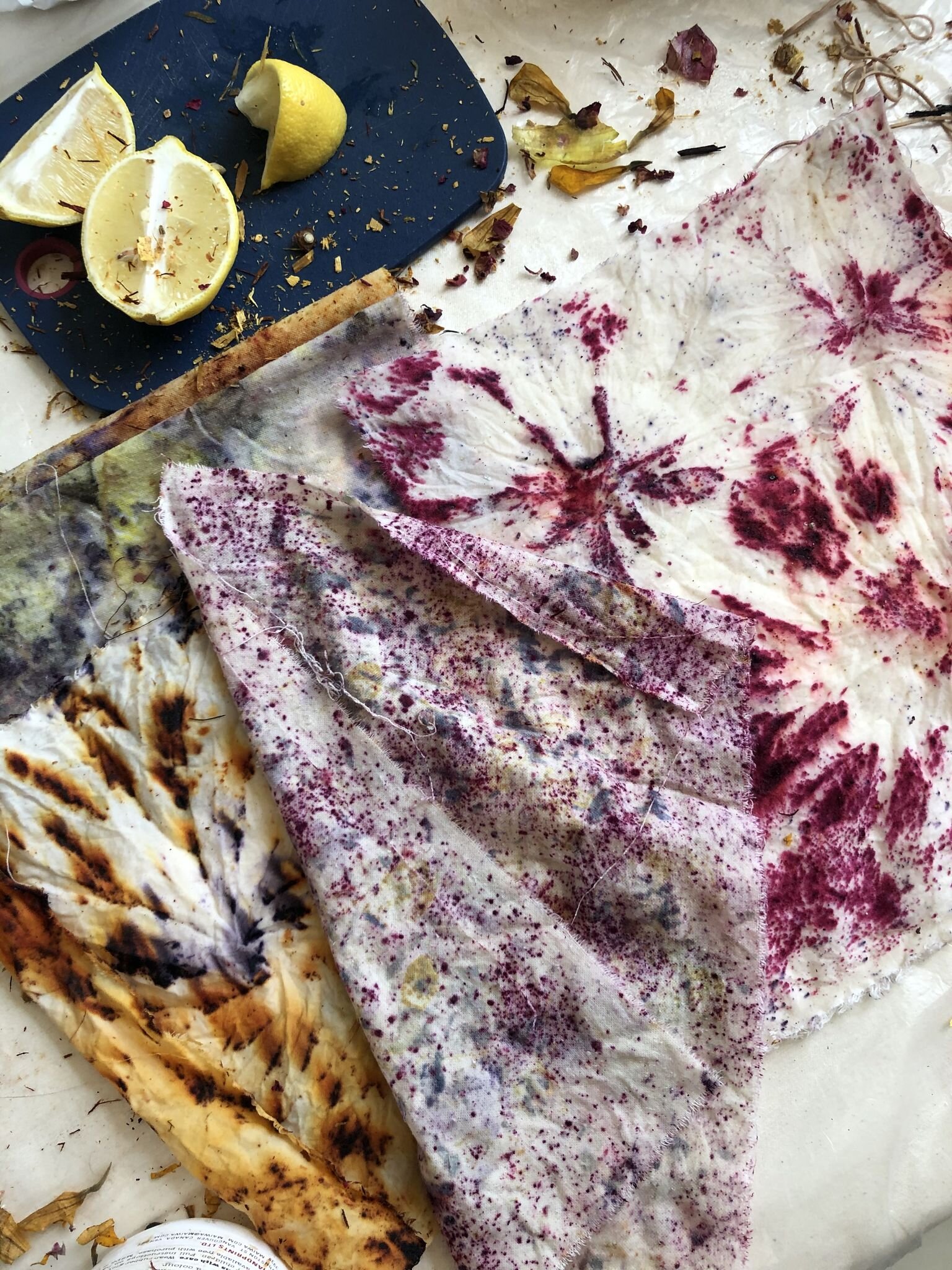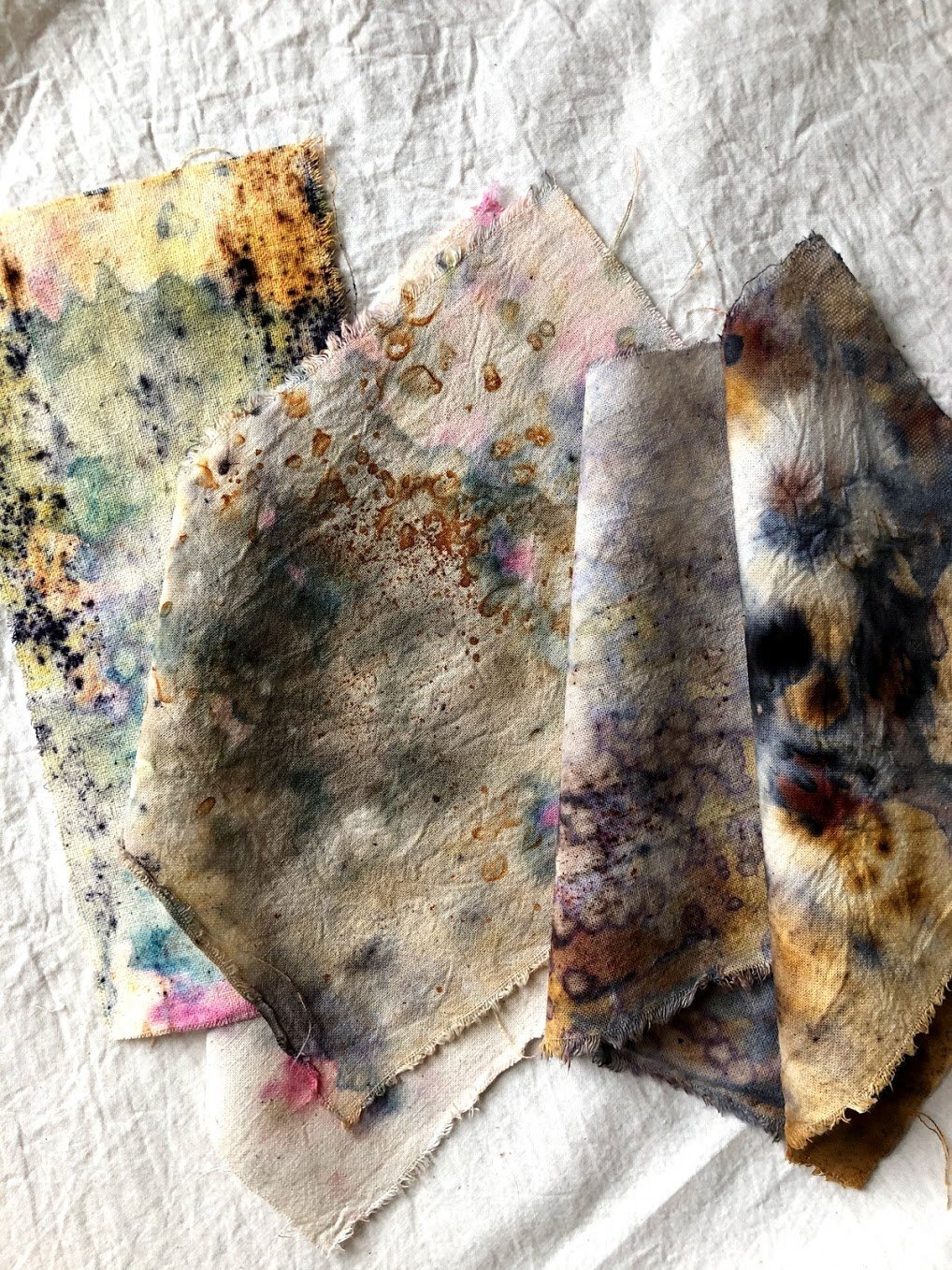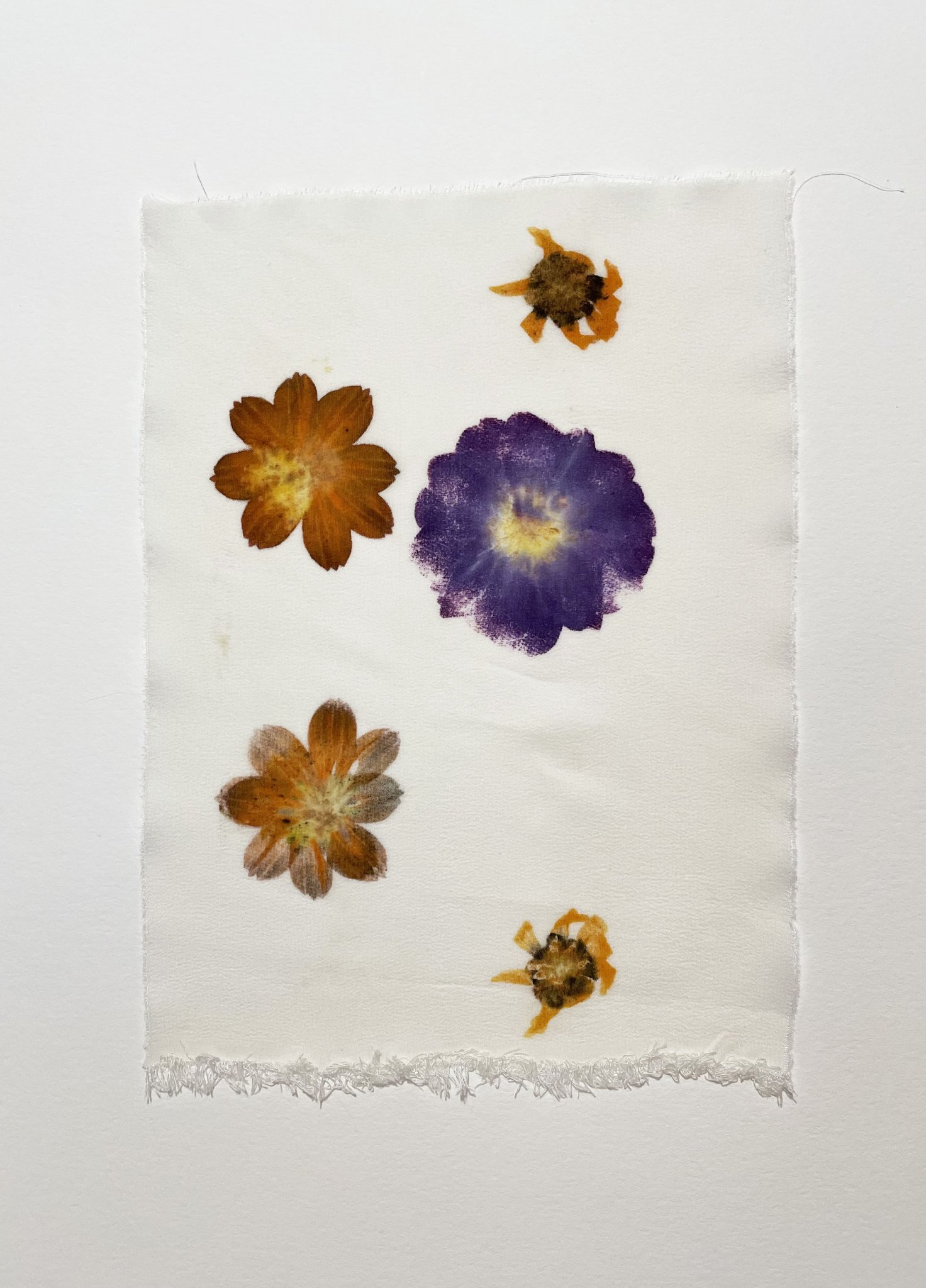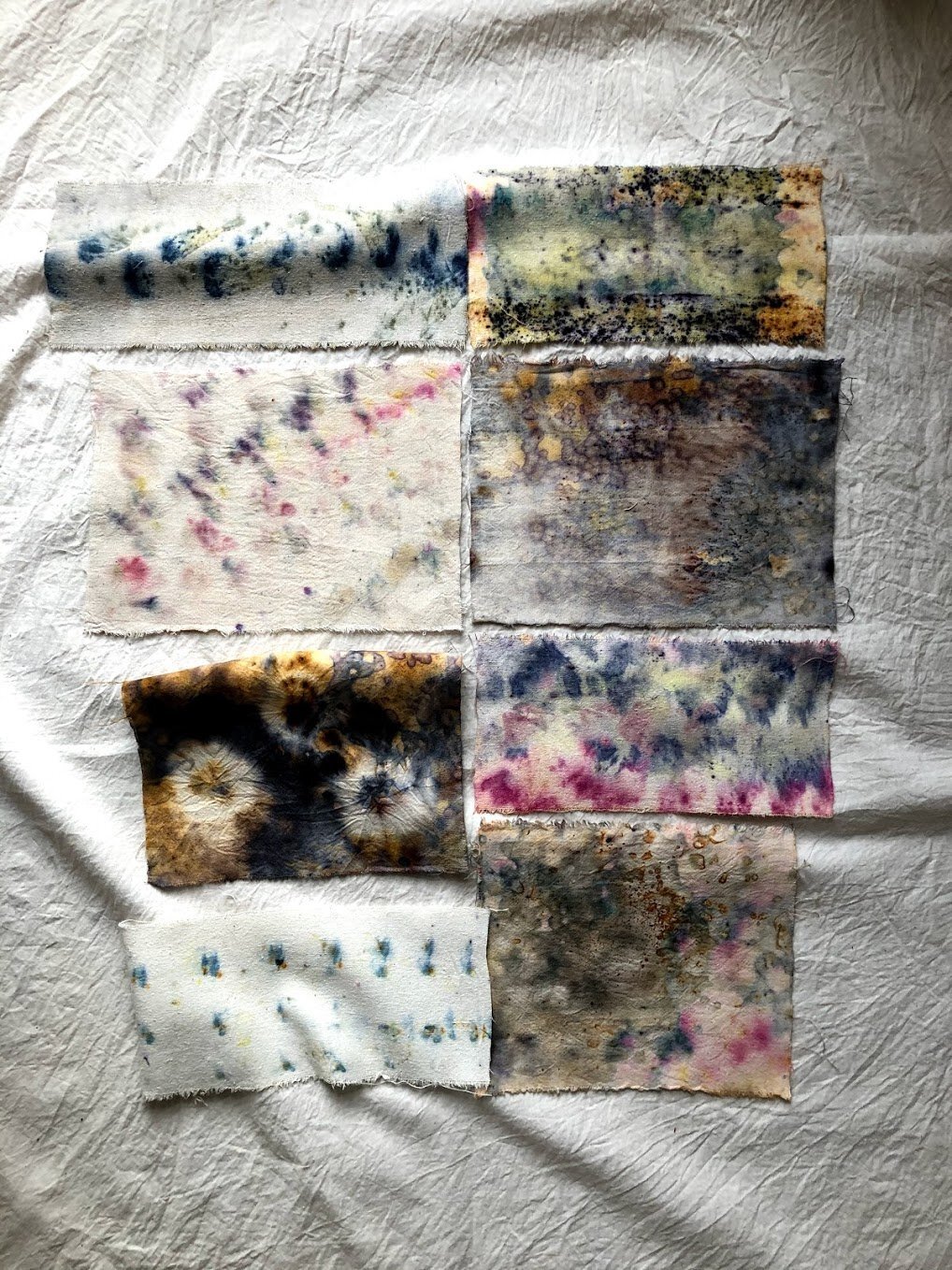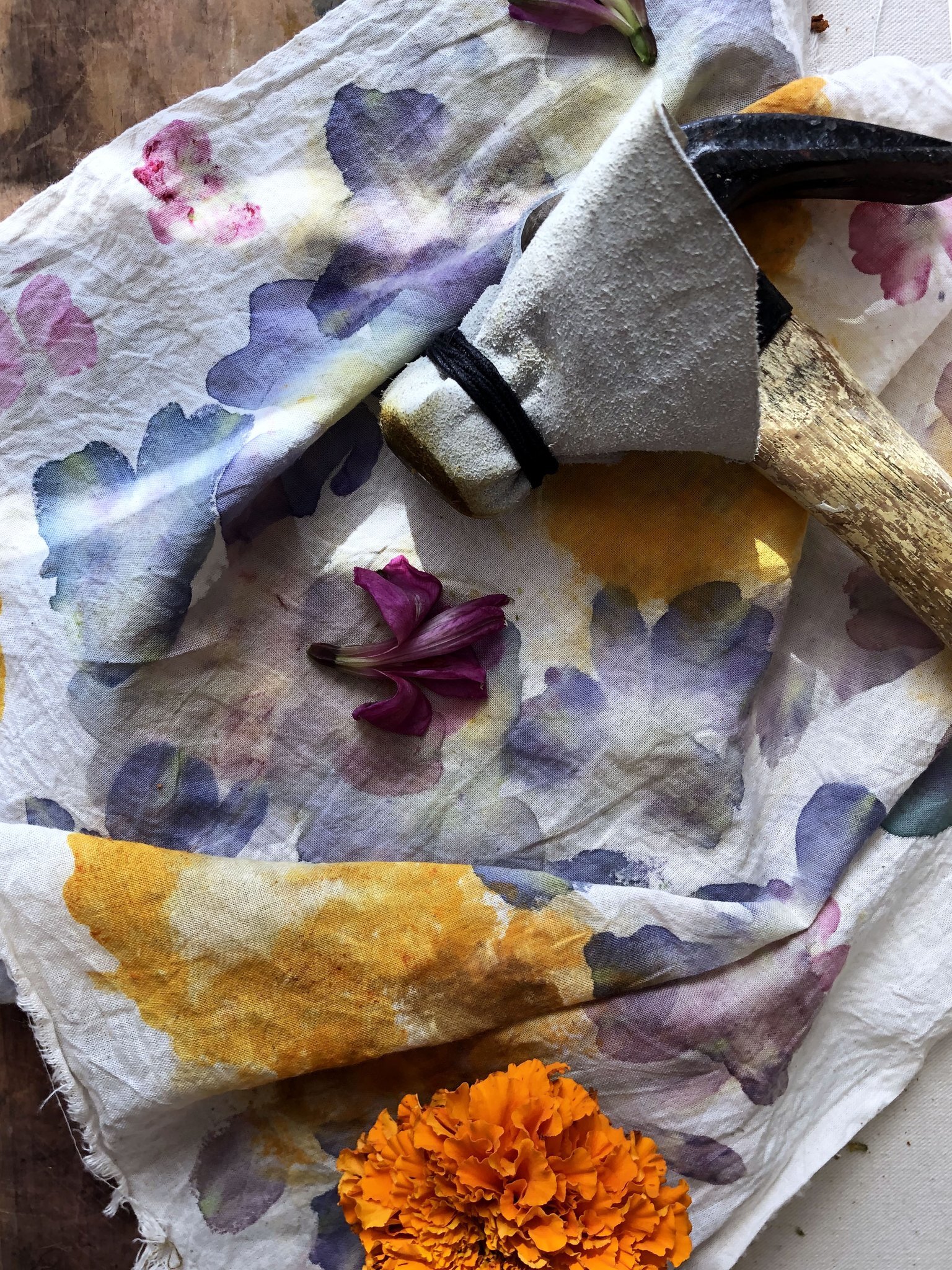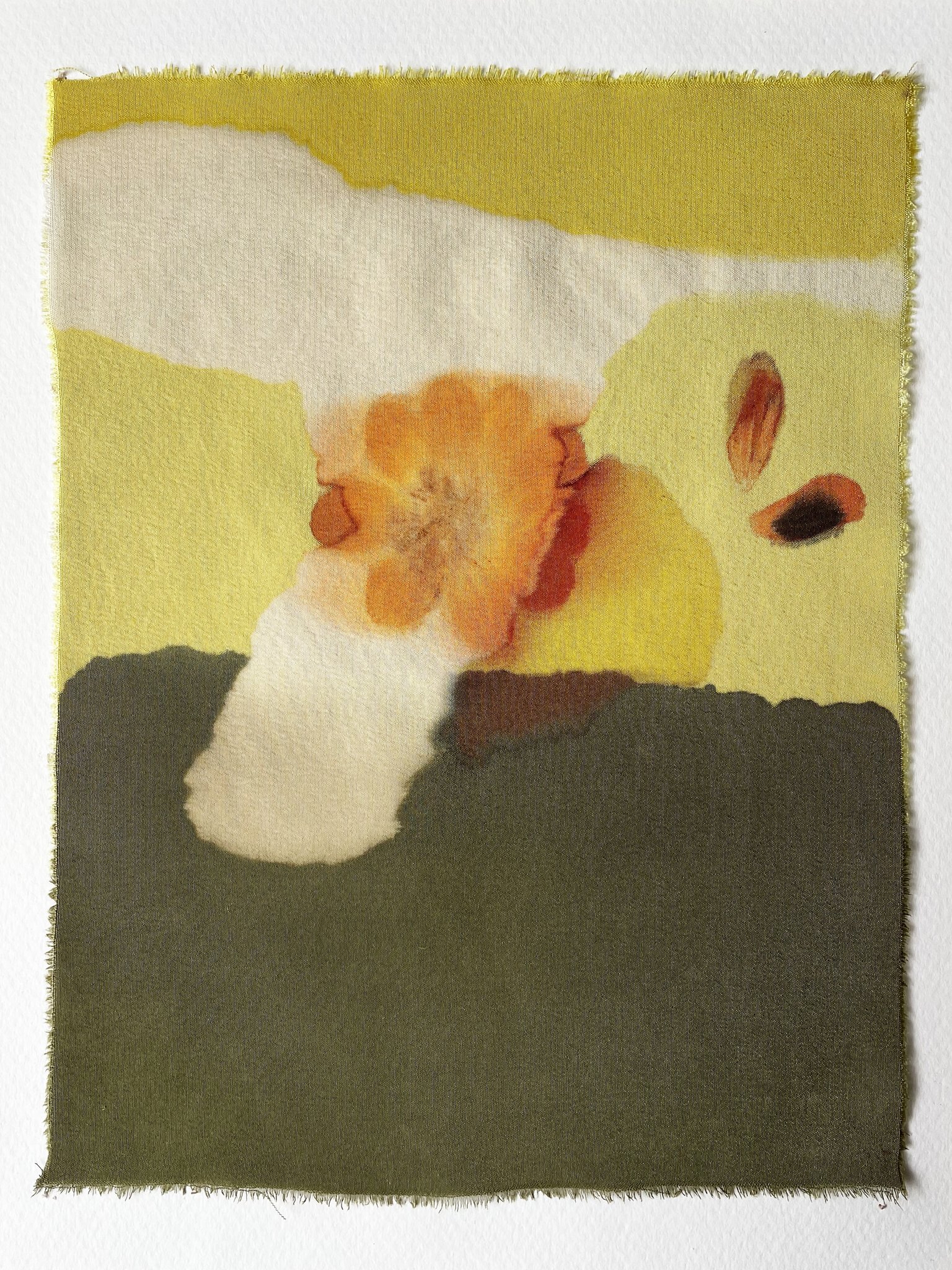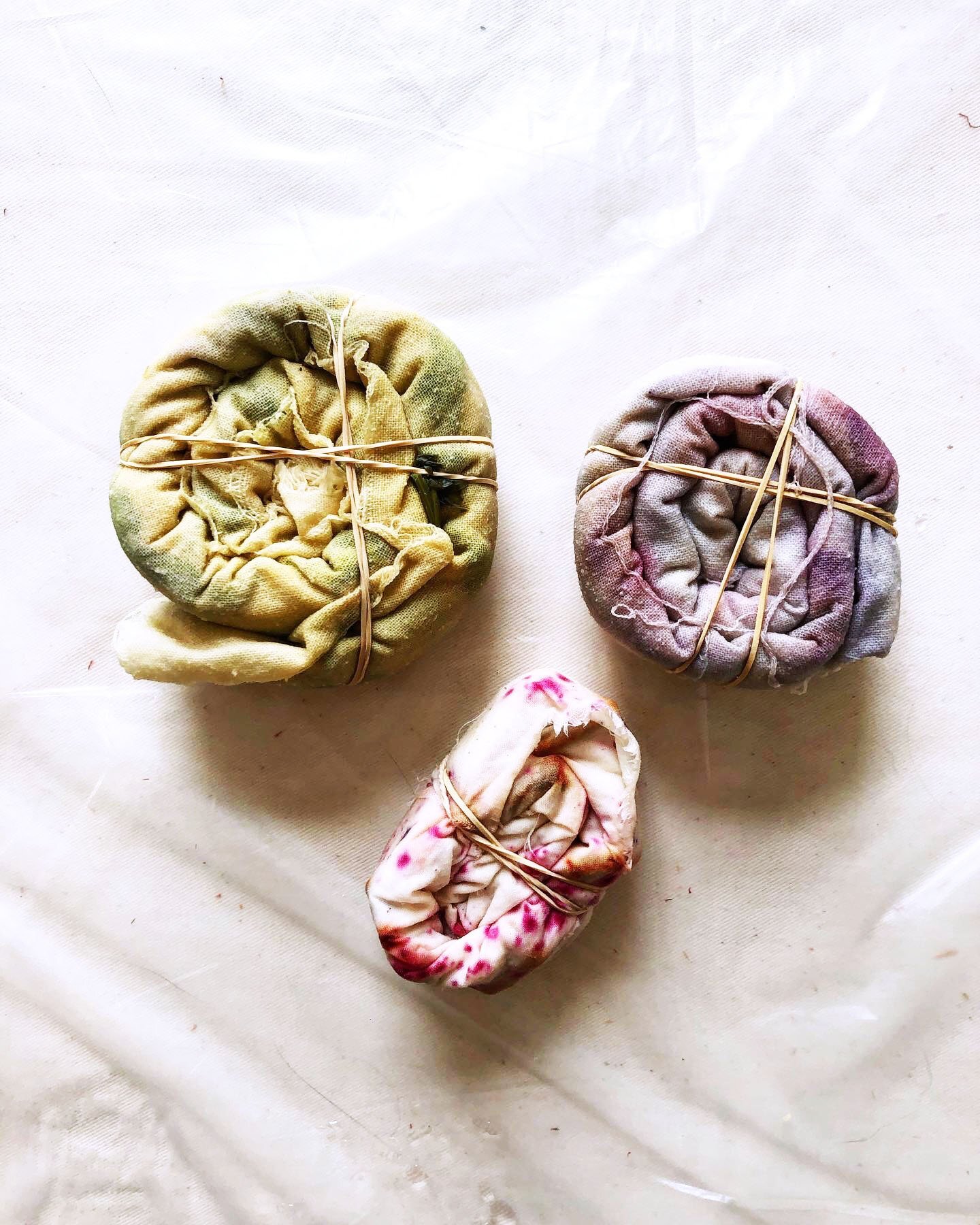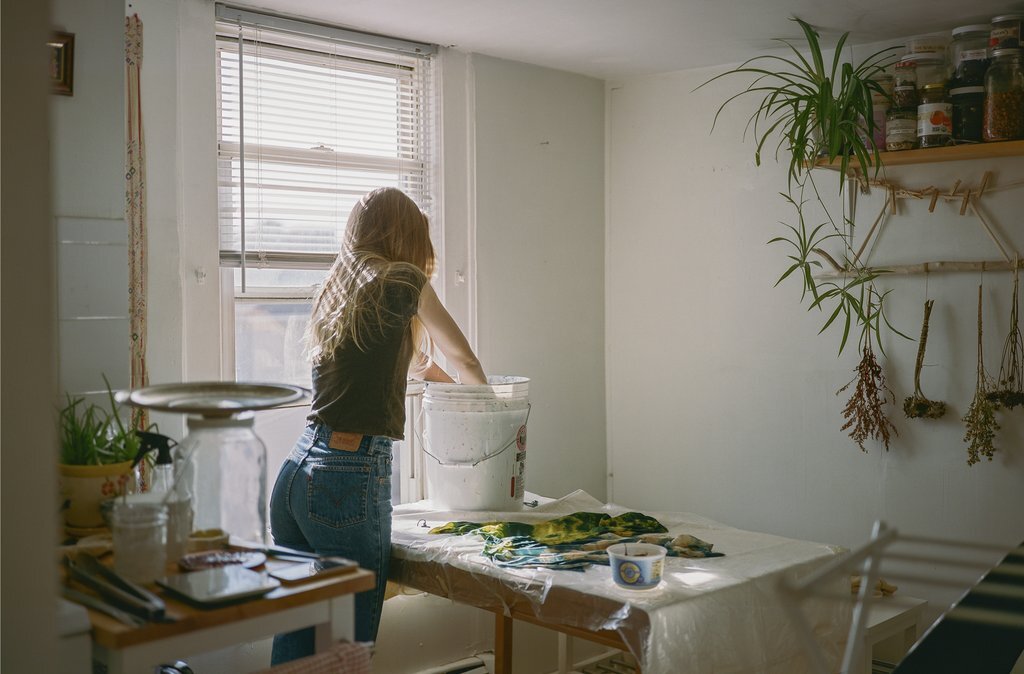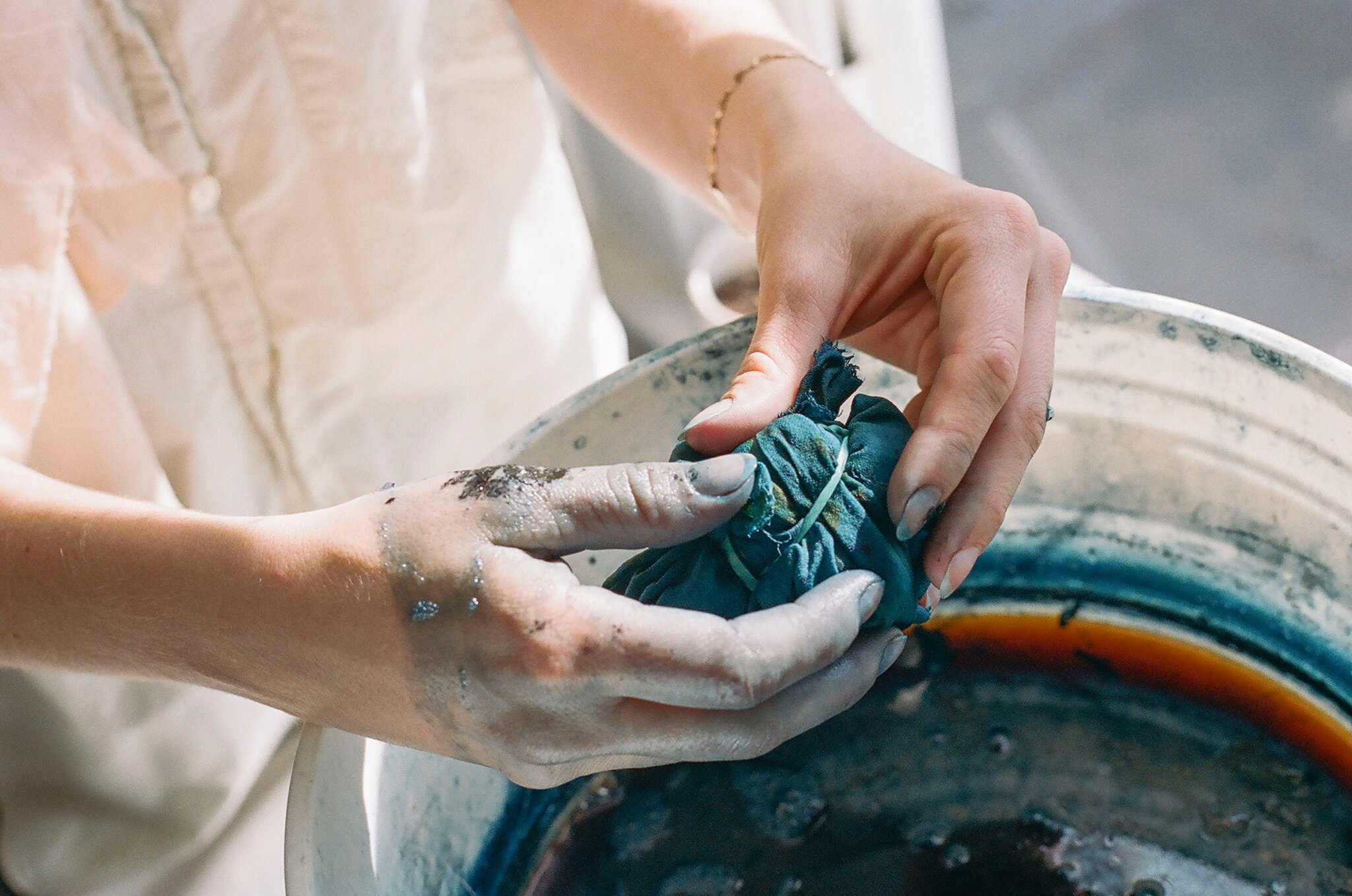Exploring Natural Dye - Part 1: ‘Connection’ with Mad Provost
Not only do flowers and plants provide beauty and health, but they can also produce methods of discovery and experimentation. Natural dye is an art with a variety of methods, forms, and purposes. We’ve interviewed a handful of natural dyers to showcase this art. Each post will feature a different guest — exploring how to use our gardens to bring unexpected color into our lives. Our first guest is Madeleine Provost, a textile artist and natural dyer from New Jersey.
Introducing Mad Provost
Madeleine, or ‘Mad’, grew up in an “intersection of nature and concrete” in Denville, New Jersey. “I approach natural color from a fine arts angle, and am obsessed with finding new ways to push plant dyes as a medium. I am on a mission to get as many people as possible thinking about where color and fibers come from, and to reconnect with nature and work with their hands. I think the more we value and pay attention where our resources come from, the more we will be able to heal our planet and ourselves.”
Photo courtesy of Greeshma Chenniveetil
Mad’s Introduction to Natural Dye
“My first memory of working with natural color was as a kid making finger paint from the mulberry tree in our backyard,” Mad reminisces. “I always was obsessed with making things with my hands, all things art and color related. I went on to study fashion design in NYC at Parsons School of Design, fascinated by how individuals and cultures express their intangible essence and character through wearable color and shapes, a visual language I wanted to learn. My senior thesis collection explored natural dyes and handcraft and how they relate to sustainable design practices, everything was hand dyed and sewn with zero waste construction.”
“After college I quickly became involved in the corporate fashion industry where I saw that design and craft was not as important as money and speed. I became interested and obsessed with natural dyes again, as a way to hold on to my humanity and stay connected with the earth and the resources that we were brutally exploiting in the industry. I was mostly self taught up until this point, and then I took a course with Liz Spencer (known as the Dogwood Dyer) who is a wonderful teacher and studying with her gave me a vision for how to make a living and a better life for myself through working with natural dyes.”
Photo courtesy of Mad Provost
Witnessing Interactions
Like many artisan crafts, learning from an experienced natural dyer is one of the best ways to successfully begin. “ I highly recommend taking a workshop with an artist or dyer whose work you admire. There is no amount of reading or youtube videos that can replace the experience of learning from another individual, and watching the nuances of how they interact with plants and fibers and physically move through the process. Some of the most impactful experiences I have had were just watching how someone lovingly placed fabric into a dye pot or massaged a garment as they rinsed it. The most important details are often the simplest, but hardest to communicate with words.”
View Mad’s offered workshops on her website.
Photo courtesy of Greeshma Chenniveetil
A Changed Path
Mad has turned her passion for natural dyes into a successful business, but on top of that, what other benefits has she experienced?
“When I started consistently and seriously working with natural dyes, particularly foraging and growing my own plants to use, it was like my world expanded.” For so many years, I was living like a zombie going from point A to point B without seeing anything or anyone in between. I was commuting to a job where I made things for people I would never meet and worked with people across the world who were just names on an email chain, using fabrics made from plants or proteins whose origins I would never know, dyed with meaningless synthetic lab-made colors. I didn’t even realize how disconnected I was from my surroundings, from the earth, from my neighbors, my clothes, my food, and honestly from myself - until I started paying attention to plants.”
“My life is so much bigger and more vibrant now because when I walk down the street I see familiar faces in the weeds muscling through the sidewalk cracks, and I know their names and the colors that exist within them. Dyeing with plants has grounded me and gives my existence roots. It gives meaning to the word “place” in this increasingly globalized and homogenized world.”
Photo courtesy of Mad Provost
Rhythm of Life
Mad connected herself to her surroundings and the processes that everything goes through.
“I believe it is healing and so empowering for people to make things with their hands - to grow something from seed, harvest it, and make something special with it. This process has taught me patience and hope, and to value all life. My mother died three years ago, and I thought I was dying too. But each time I grow something from seed - watch it grow and bloom, accept their gift of color and beauty, and watch it die to make way for more life next time - I feel a little stronger, and held by this circle of life. I feel grateful to be able to foster new life and honor the passing of old ones.”
Photo courtesy of Mad Provost
Intentional Inspiration
Each artist has his or her own patterns or methods for stimulating creativity. Mad told us she finds inspiration in tension and challenge. “I live in urban Jersey City, just a hop skip and jump away from the Big Apple (Manhattan) and so my interactions with nature have to be intentional,” she elaborated with us. “I like the challenge of finding nature in a city or challenging landscape, and currently am inspired by noxious ‘weeds’ and species that thrive in disturbed and rough environments.“
“In 2019 I went to the most arid environment in the world, the Atacama Desert in Chile, for an artist residency with La Wayaka Current where I studied the natural dyes of endemic plant species and how living color can represent place, time, and climate conditions. I am also a runner and have a routine where I go for long runs around the city to spots off the beaten path where I can forage for plants to dye with.”
Just as one’s physical environment shapes and guides the artistic process, one’s mental state can also have an exceptional influence.
“I like to get into a meditative state of mind with my daily dye practice, which is to create one small dyed piece a day to keep my hands and muscle memory fresh as well as my mind. This process of allowing myself to create something without any expectation or outcome, just letting one mark follow another, acts as an inspiration for me to see that sometimes you learn more from being present and intuitive rather than consumed by thoughts or calculated planning.”
Metamorphic Mistakes
Connecting can sometimes mean continuing.
“My favorite method is accidental creation! Most of my favorite outcomes have been informed by my mistakes. I have learned to lean into them, and it has become a pseudo study of improvisation for me,” Mad laughs.
"So much of life is out of our hands but what we can control is how we respond, so I see my work as a way to practice the art of responding. One of my favorite techniques which I refer to as painting with pH, came from spilling an acidic substance on a dyed piece of fabric which altered the pH and thus the color and I realized, hey what if I just go with that and make that spill part of the design?
What I could have initially seen as a mistake and ruined item, I decided to see as an opportunity for innovation.”
Photo courtesy of Mad Provost
“Lately I have also been enjoying the process of hammering and pounding flowers, a technique known as “hapa zome” which is a Japanese technique of transferring fresh flowers or leaves to fabric, through pounding and creating a stamp-like transfer. I love the almost photographic nature of this process that captures a flower in full bloom, like a snapshot immortalizes a moment in time. I like to layer this technique with others such as immersion dyeing (creating a solid background color to then stamp on top of), or bundle dyeing with dried flowers to create all over impressionist patterns and layering fresh flower stamps on top, mixing lots of different textures.”
Photo courtesy of Mad Provost
Living Color
Homegrown flowers are a favorite of Mad’s and we can’t blame her. “There is nothing so satisfying as growing your own living color! … Currently I am using a lot of coreopsis and tango cosmos in my work since I have a lot of blooms, but soon I am expecting to work with my black knight scabiosa (purple pin cushion) flowers and homegrown indigo (persicaria tinctoria) from the garden I have made on my fire escape. I like using my homegrown plants because I feel more connected to them, and can also study the health of the plants through the color outcomes I get and plan to continue experimenting with different conditions moving forward like sunlight exposure, soil composition, symbiotic systems, etc and how these affect my dyes.”
View Halden’s selection of Coreopsis, Scabiosa, and Cosmos Seeds.
A Passion-Led Journey
“Enjoy the process (of whatever your passion is) and allow yourself to be led by it rather than to control it.” Mad passionately advises us all. “When I look back on where I started, I am amazed at where my journey with natural dyes has led me and all of the people I have met and places I have been led by my love of natural color. There is something so freeing about letting nature take hold and trusting it will lead you right where you need to be.”
Photo courtesy of Mad Provost
View more of Mad’s inspiring work on her website or on Instagram at @mad_provost
Photos by Mad Provost, Greeshma Chenniveetil, and Nathan Cyprys
